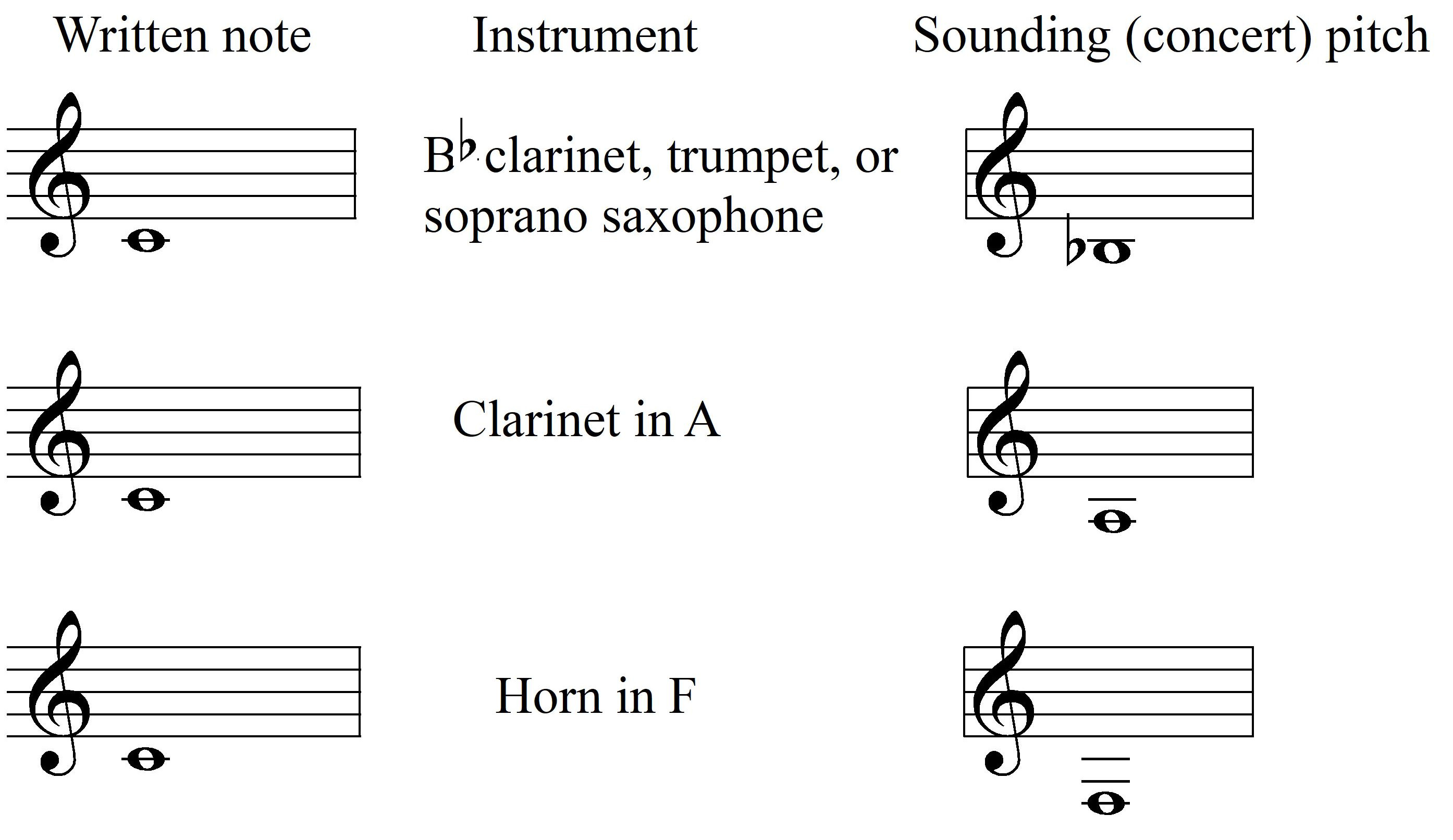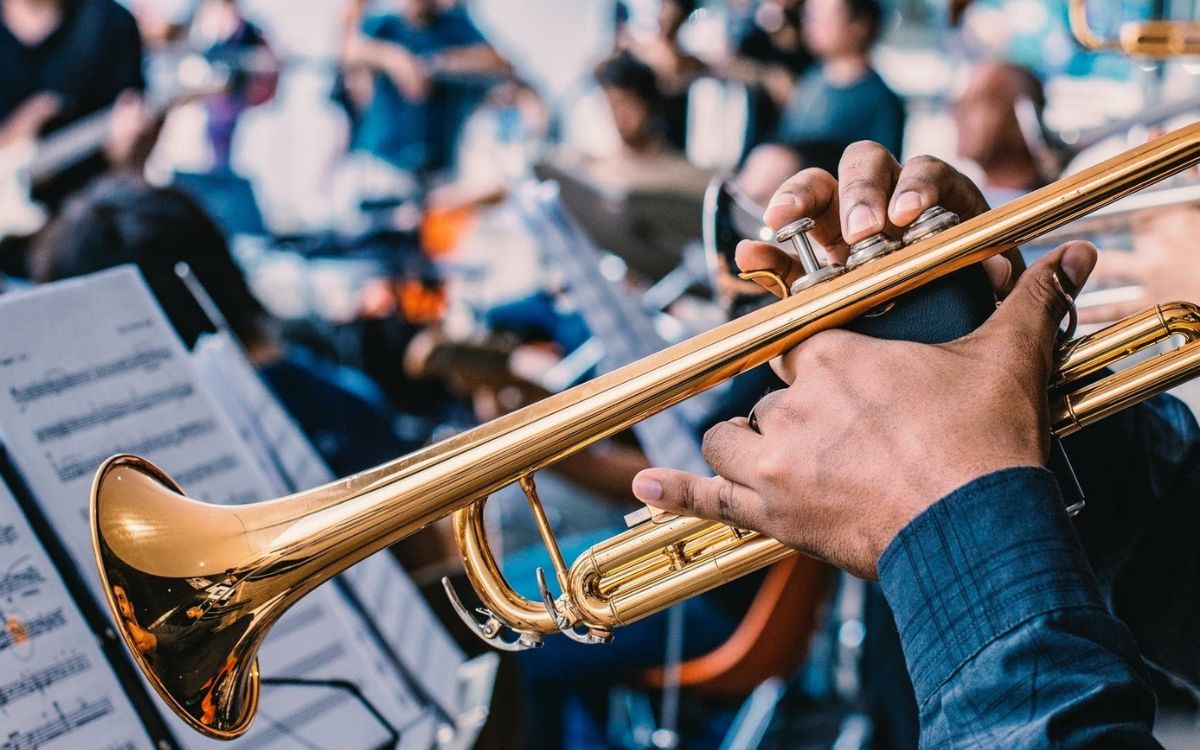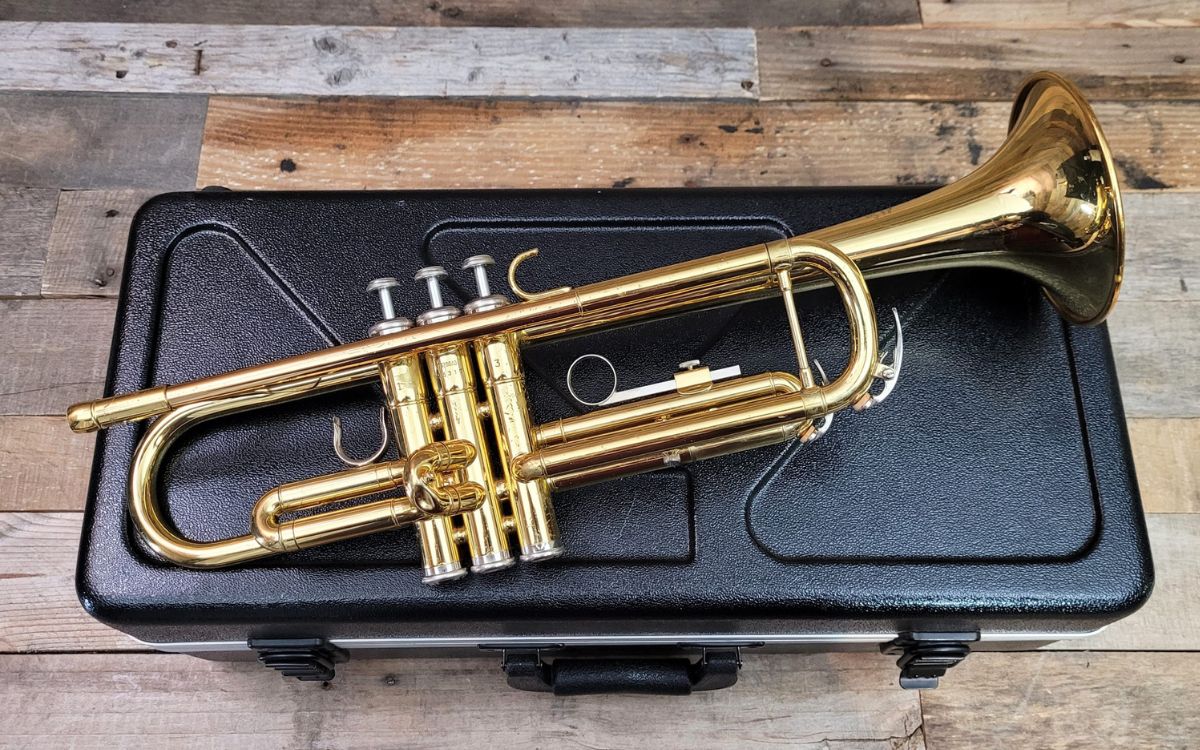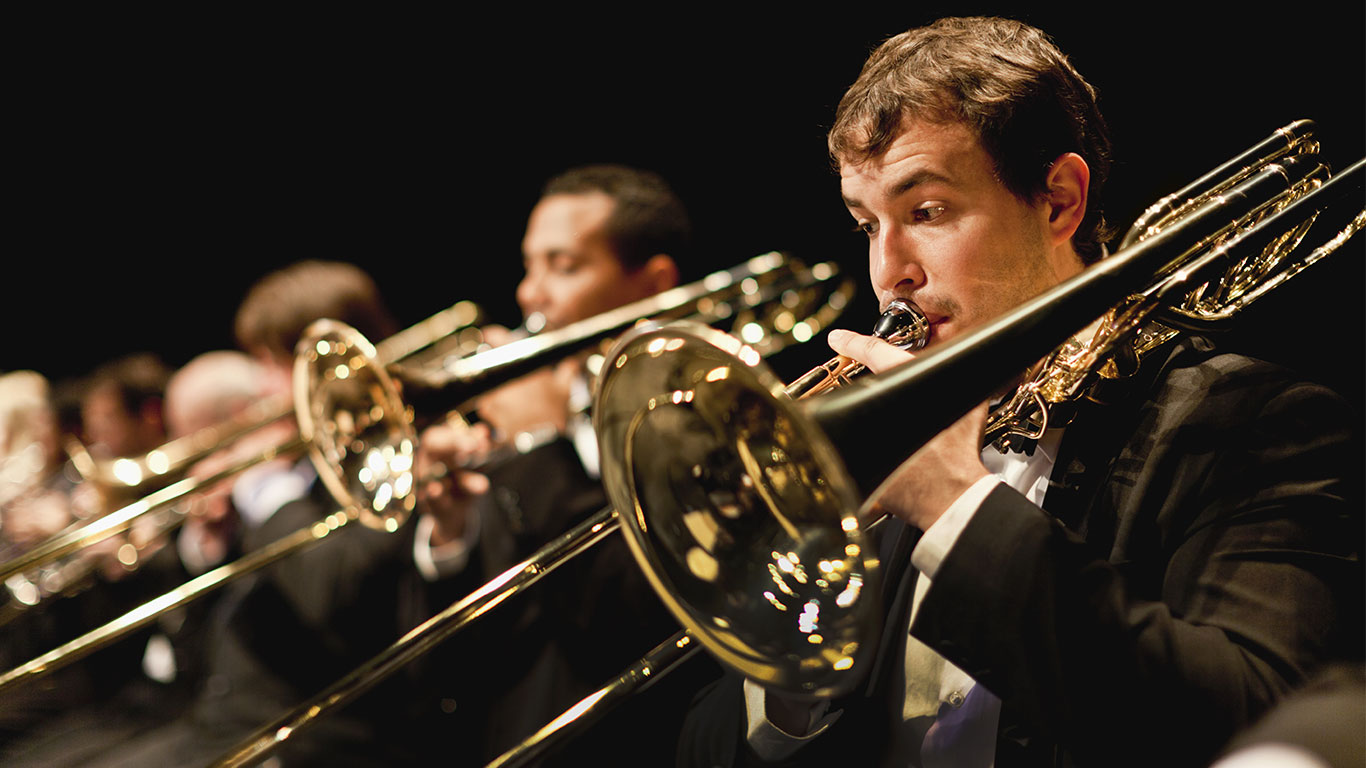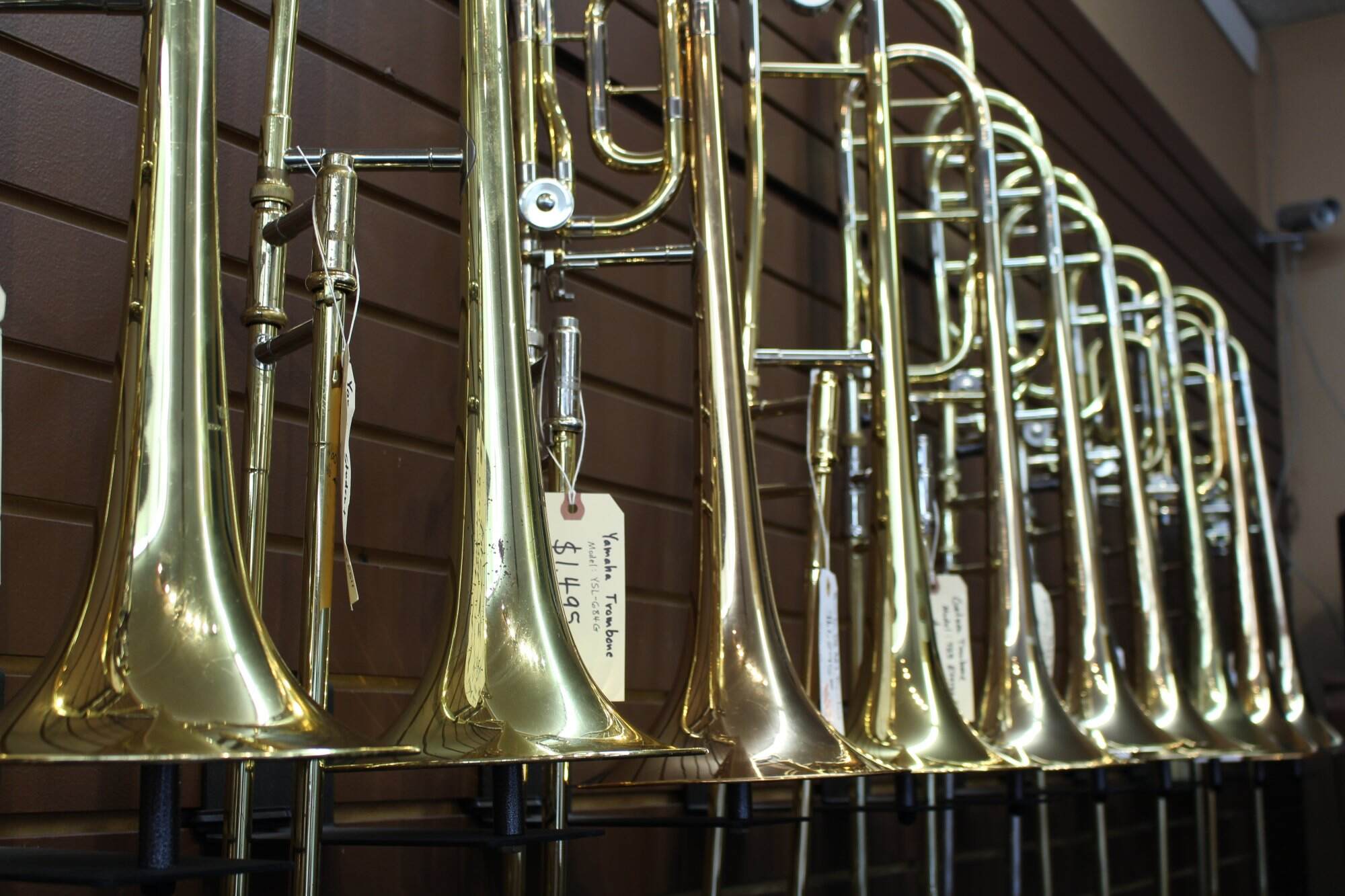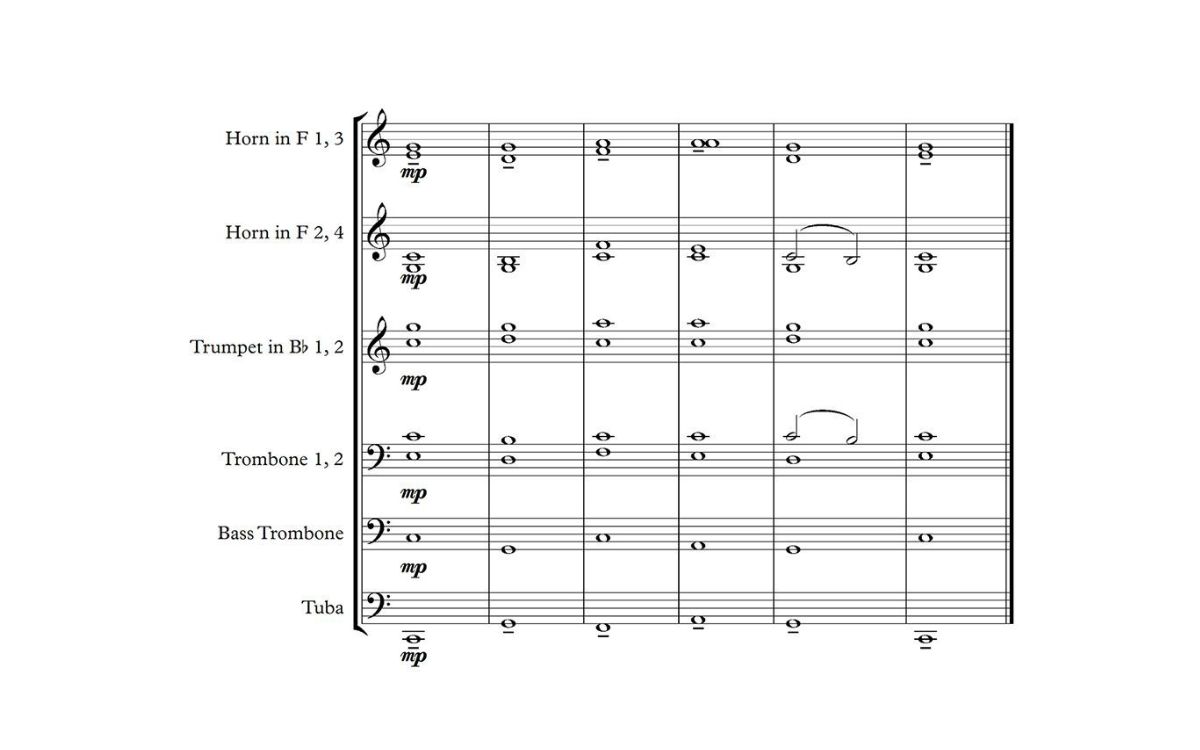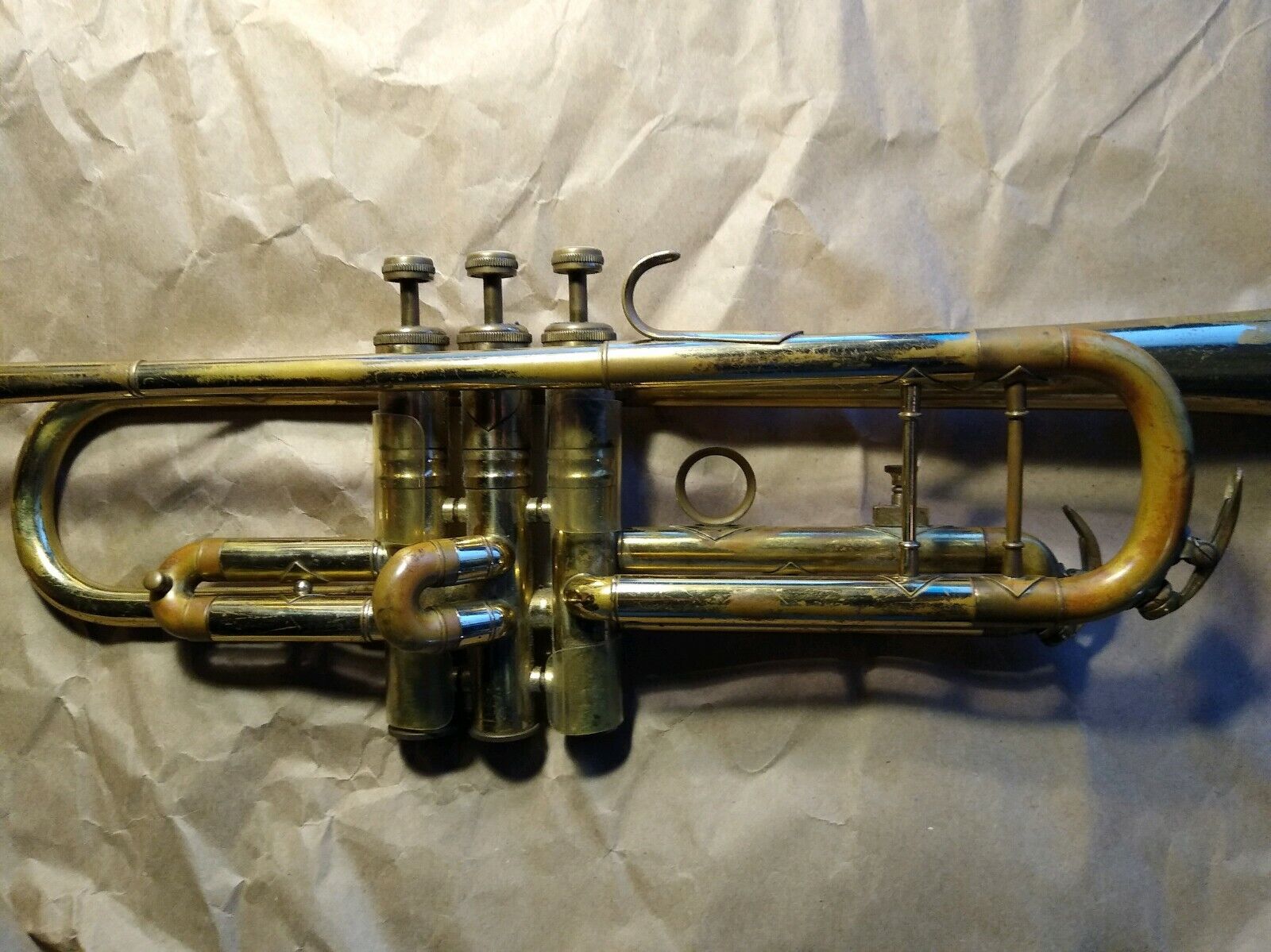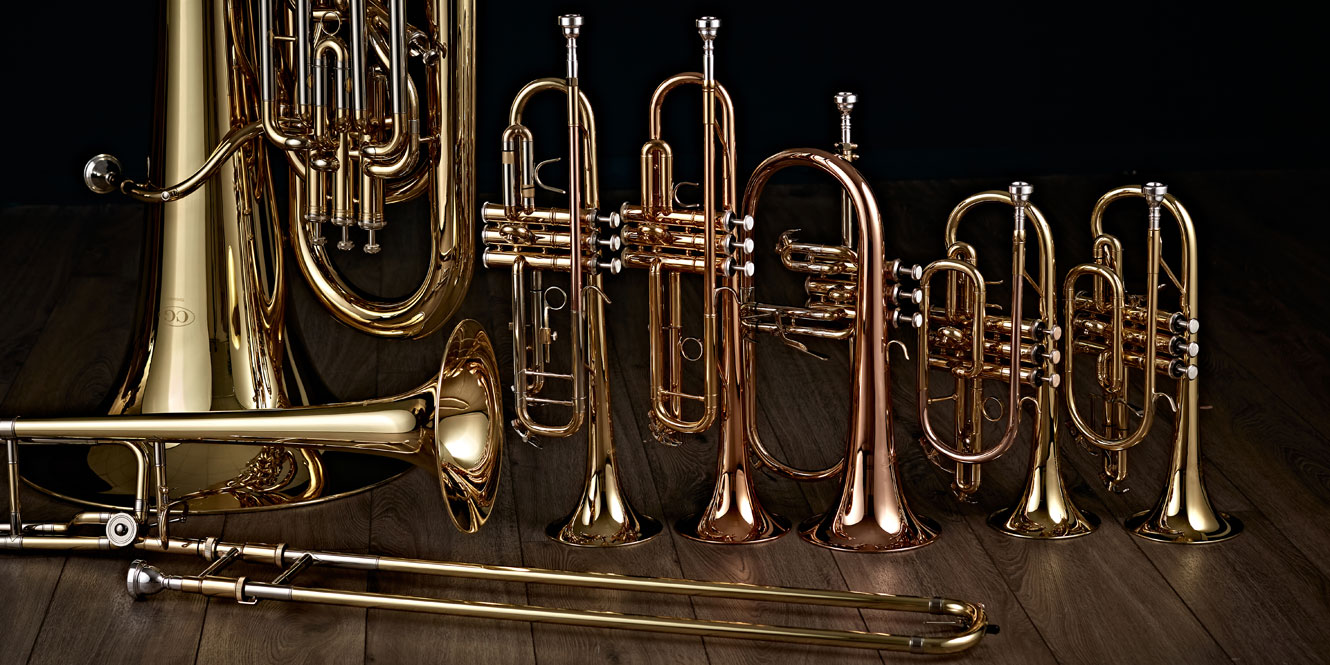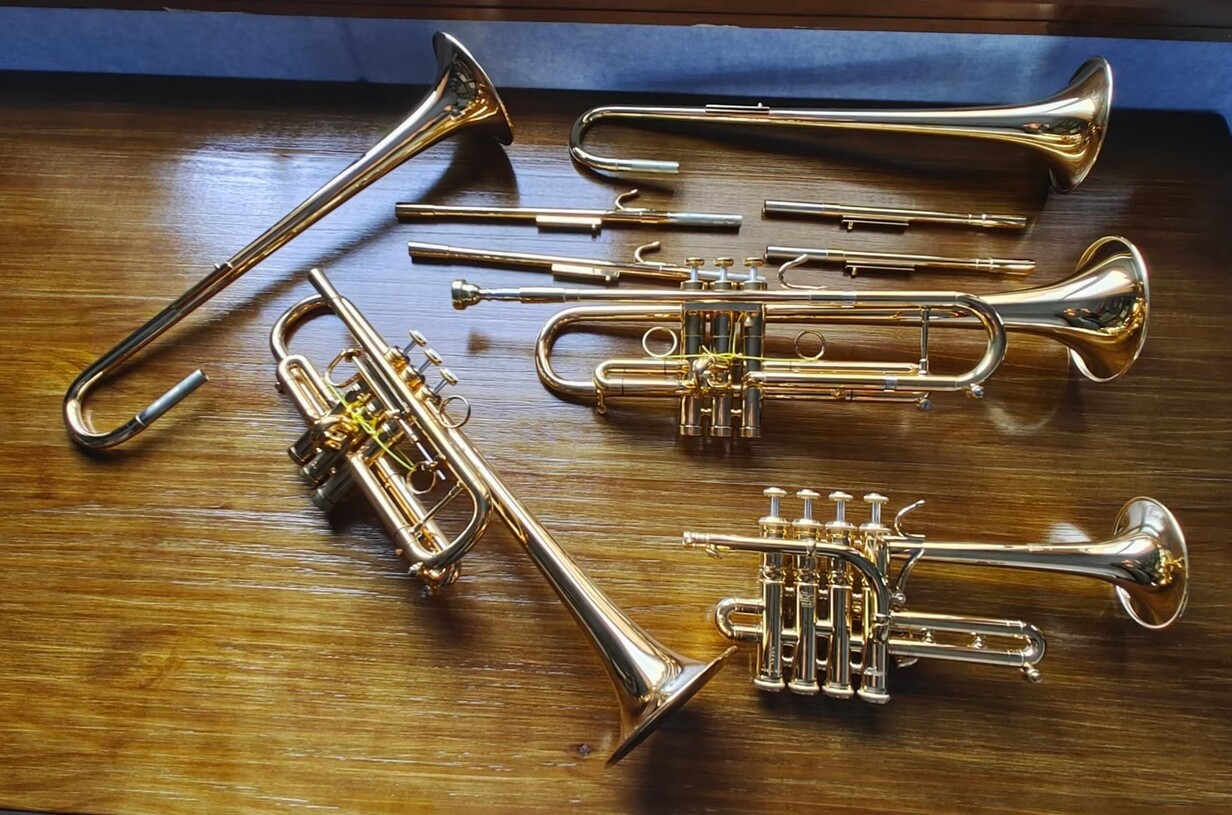Home>Instruments>Brass Instruments>Why Can’t Brass Instruments Play Runs


Brass Instruments
Why Can’t Brass Instruments Play Runs
Published: January 15, 2024
Discover the reason why brass instruments struggle with playing quick runs. Explore the limitations and techniques unique to these iconic musical instruments.
(Many of the links in this article redirect to a specific reviewed product. Your purchase of these products through affiliate links helps to generate commission for AudioLover.com, at no extra cost. Learn more)
Table of Contents
Introduction
Welcome to the world of brass instruments, where the warm, vibrant tones and rich harmonies captivate listeners. Brass instruments have a long and storied history, dating back centuries and encompassing a wide range of instruments, from trumpets and trombones to tubas and horns. These instruments have played integral roles in various genres of music, including classical, jazz, and marching bands.
One common challenge that brass musicians face is playing runs, which are fast and sequential passages of musical notes. Runs require precision, agility, and control to execute seamlessly. However, brass instruments present unique obstacles when it comes to playing runs due to their physical limitations and the techniques required to navigate rapid note changes.
In this article, we will explore why brass instruments struggle with playing runs and delve into the physical limitations and technical aspects that contribute to these challenges. We will also discuss strategies that brass musicians employ to overcome these obstacles, allowing them to master the art of playing runs on their instruments.
Understanding Brass Instruments
Before we delve into the challenges brass instruments face in playing runs, it’s essential to have a basic understanding of these instruments and how they produce sound. Brass instruments are classified as aerophones, as they generate sound through the vibration of the musician’s lips against a cup-shaped mouthpiece.
Brass instruments are typically made of brass or other metals, such as silver or gold, and consist of a long, conical tube with a flared bell at one end. The musician creates different pitches by altering the length of the air column through a series of valves or by sliding the main tubing in the case of trombones.
These instruments are known for their unique sound characteristics, characterized by a warm, resonant tone. The size and shape of the instrument, along with the materials used, contribute to the instrument’s timbre and projection.
Brass instruments are played by buzzing the lips into the mouthpiece, creating vibrations that resonate throughout the instrument. The musician then uses their fingers or a slide to change the length of the air column, producing different pitches. The control of airflow, embouchure (the position and tension of the lips), and finger or slide technique are crucial in achieving accurate and expressive performance.
What Are Runs in Music?
In music, runs are fast, sequential passages of notes that are played in quick succession. They are often used to add flair, excitement, and virtuosity to a musical piece. Runs can appear in various genres and styles of music, including classical, jazz, and pop.
Runs can be found in both melodic and harmonic contexts. In a melodic run, a succession of notes is played one after another, creating a sense of fluid movement and showcasing the technical prowess of the player. In a harmonic run, the notes are played simultaneously, forming a quick succession of chords or arpeggios.
Runs can be found in solos, cadenzas, improvisations, and even accompaniments. They can be short and simple or long and complex, depending on the desired effect and the musical context. Regardless of their length or complexity, runs require precision, coordination, and dexterity to execute effectively.
One of the defining characteristics of runs is their speed. They are often played at a rapid tempo, requiring the musician to perform swift finger or slide movements and maintain precise timing. Runs can also incorporate various musical techniques, such as trills, turns, and grace notes, further enhancing their expressiveness and complexity.
Runs serve multiple purposes in music. They can serve as flashy embellishments, showcasing the technical skill of the performer. They can also help establish a musical motif or theme, adding a distinctive element to the composition. Additionally, runs can be used to create tension, build momentum, or provide a climactic moment in a musical piece.
Overall, runs are a fundamental aspect of music, adding excitement, virtuosity, and musical interest. While they may pose challenges for brass instruments, mastering the art of playing runs can greatly enhance a musician’s versatility and performance capabilities.
Challenges Faced by Brass Instruments in Playing Runs
Playing runs on brass instruments presents unique challenges that differ from those faced by other instrumentalists. These challenges arise from the physical characteristics of brass instruments and the techniques required to navigate rapid note changes. Let’s explore some of these challenges:
1. Limited agility: Brass instruments have larger tubing and wider bore sizes compared to other instruments. This can make it more difficult for the player to articulate and navigate rapid passages with precision and speed.
2. Air control: Brass instruments require a steady and controlled stream of air to produce sound. Playing runs demands quick and accurate changes in airflow, which can be challenging to maintain consistently and efficiently.
3. Intonation: Brass instruments rely on the player’s lip tension and embouchure to produce different pitches. Rapid runs can pose intonation issues, as the player needs to quickly adjust the lip tension to achieve accurate pitches.
4. Finger/slide technique: Brass instruments with valves or slides, such as trumpets and trombones, require precise finger or slide movements to navigate runs smoothly. Coordinating these movements while maintaining accuracy and speed can be demanding.
5. Endurance: Playing runs can be physically demanding, especially for longer passages. Brass players need to develop the stamina and endurance required to sustain the necessary embouchure control and airflow throughout the run.
6. Articulation: Producing distinct and precise articulation in runs can be challenging on brass instruments. Clear separation between individual notes and maintaining consistent attack is crucial for a clean and expressive performance.
Overcoming these challenges requires dedicated practice, technical proficiency, and an understanding of the instrument’s capabilities. By developing agility, refining air control, honing finger or slide technique, and building endurance, brass players can improve their ability to execute runs seamlessly on their instruments.
Physical Limitations of Brass Instruments
Brass instruments, while capable of producing beautiful and resonant sounds, have inherent physical limitations that can pose challenges when playing runs. These limitations stem from the instrument’s design and construction. Let’s explore some of the key physical limitations of brass instruments:
1. Slower response: Due to the size and shape of the tubing, brass instruments have a slower initial response compared to other instruments. This means that it takes a fraction of a second longer for the sound to be produced after the player initiates the air stream, making it more difficult to achieve the desired precision and articulation in fast runs.
2. Slide restrictions: Instruments like the trombone utilize a slide mechanism instead of valves. The slide, while allowing for seamless glissandos and smooth note transitions, can present challenges in rapidly changing positions during runs. Coordinating the slide movement and precision in pitch can be demanding.
3. Limited note range: Each brass instrument has a specific range of playable notes. While this range is extensive, it may not cover the full range required for certain runs or melodic passages, especially in higher or lower registers. This can present challenges in achieving the desired musical effect and may require transposition or adaptation of the musical passage.
4. Harmonic limitations: Brass instruments are primarily designed to play melodic lines and harmonies. Playing complex harmonic progressions or intricate chordal runs may present challenges due to the limitations of the instrument’s harmonic capabilities.
5. Pronounced attack: Brass instruments tend to have a slightly delayed response before the sound becomes fully focused and resonant. This can make it challenging to achieve a consistent and precise attack in rapid runs, where quick and clean articulation is crucial.
6. Tone color variations: Playing rapid runs can affect the tone color or timbre produced by brass instruments. The rapid succession of notes can cause slight fluctuations in the sound and may result in subtle differences in tonal quality compared to sustained notes.
Understanding these physical limitations is essential for brass players. By acknowledging and working within these constraints, musicians can adapt their techniques and develop strategies to overcome these challenges, enabling them to achieve impressive and seamless runs on their instruments.
The Role of Technique in Playing Runs on Brass Instruments
When it comes to playing runs on brass instruments, technique plays a vital role in overcoming the challenges and achieving a smooth and expressive performance. A solid technique allows musicians to navigate rapid note changes with accuracy, control, and efficiency. Here are some key aspects of technique that contribute to successful runs on brass instruments:
1. Finger and slide dexterity: Brass players must develop dexterity in their finger or slide movements to navigate runs smoothly and quickly. This involves practicing precise and efficient fingerings or slide positions to facilitate rapid note changes and maintain accuracy.
2. Articulation control: Clear and precise articulation is crucial in playing runs on brass instruments. Musicians must work on developing control over their tongue and airflow to achieve clean separations between notes and consistent attack.
3. Lip flexibility: Brass players rely on their embouchure, the position and tension of the lips, to produce sound. Developing lip flexibility through exercises and warm-ups enables musicians to adjust quickly between notes, facilitating smoother runs.
4. Air support and control: Maintaining steady and consistent airflow is essential for playing runs on brass instruments. Musicians must work on developing their breathing technique and diaphragmatic support to ensure a continuous and controlled stream of air throughout the run.
5. Rhythmic precision: Runs often involve intricate rhythmic patterns. Brass players must develop a strong sense of rhythm and timing to execute runs accurately. Practicing with a metronome and focusing on rhythmic subdivisions can help improve precision and establish a solid rhythmic foundation.
6. Dynamic control: Playing runs with a sense of musicality requires control over dynamics. Musicians must practice varying the volume and intensity during runs to add expressiveness and shape the overall sound of the passage.
Developing these technical aspects requires dedicated practice, patience, and guidance from experienced teachers. Brass musicians should focus on targeted exercises and etudes that specifically address the challenges encountered in playing runs. By honing their technique, brass players can overcome the physical limitations of their instruments and achieve impressive proficiency in executing runs with finesse, precision, and musicality.
Strategies to Overcome Challenges in Playing Runs on Brass Instruments
Playing runs on brass instruments can be challenging, but with the right strategies and approaches, musicians can overcome these obstacles and master the art of executing runs smoothly and confidently. Here are some effective strategies to help brass players overcome challenges in playing runs:
1. Slow and deliberate practice: Start by practicing the run at a slower tempo, focusing on accuracy, finger or slide movements, and articulation. Gradually increase the speed as you become more comfortable and confident. Breaking down the run into smaller segments and practicing them individually can also be helpful in mastering the entire passage.
2. Mental preparation: Visualize the run and mentally map out the finger or slide movements before physically playing it. This mental preparation helps develop muscle memory and improves coordination, making it easier to execute the run accurately and effortlessly.
3. Isolate and target problem areas: Identify specific sections or transitions within the run that pose the most challenge. Separate these problematic areas and practice them repeatedly to improve accuracy and fluidity. Utilize various exercises, such as scales, intervals, and arpeggios, to target specific technical difficulties.
4. Focus on tone production: While playing runs, it’s essential to maintain a consistent and well-controlled tone. Pay attention to your embouchure, airflow, and tongue placement to ensure a stable and resonant sound throughout the run. Incorporate long tone exercises and lip slurs into your practice routine to enhance tone production.
5. Develop musicality: Remember that runs are not just about technical proficiency; they should also convey musical expression. Experiment with different phrasing, dynamics, and articulation styles to add depth and emotion to the run. Study the context of the musical piece and understand the intended mood to inform your interpretation of the run.
6. Seek guidance from a mentor or instructor: Working with a knowledgeable teacher or mentor can greatly enhance your progress in playing runs. They can provide valuable feedback, offer personalized exercises and practice techniques, and guide you in refining your technique and musical interpretation.
7. Record and evaluate your practice sessions: Use recording devices to capture your practice sessions. Regularly review and analyze your recordings to identify areas in need of improvement. This self-assessment allows you to identify patterns, track progress, and make necessary adjustments to your practice routine.
Remember, consistent and focused practice is the key to overcoming challenges in playing runs. By implementing these strategies and maintaining a positive and patient mindset, brass players can gradually enhance their technical skills, overcome the limitations of their instruments, and achieve mastery in playing runs.
Conclusion
Playing runs on brass instruments may present unique challenges, but with dedication, practice, and a strong understanding of technique, these obstacles can be overcome. Understanding the physical limitations of brass instruments and employing strategies to address them allows brass players to navigate runs with precision, agility, and musicality.
By focusing on finger or slide dexterity, articulation control, lip flexibility, air support, rhythmic precision, and dynamic control, brass musicians can develop the necessary skills to execute runs seamlessly. Incorporating slow and deliberate practice, mental preparation, isolating problem areas, and seeking guidance from experienced instructors also contribute to achieving proficiency in playing runs.
It is essential for brass players to embrace the challenges and recognize that mastery is a continuous journey. Consistent practice, self-assessment, and a growth mindset will help them overcome any obstacles they encounter along the way.
Brass instruments possess a unique and enchanting sound, and mastering runs adds an impressive level of flair and virtuosity to a musician’s repertoire. By honing their technique, musicians can confidently tackle runs, showcasing their skill and expressiveness.
So, continue to embrace the challenges, put in the work, and let the magic of brass instruments shine through as you effortlessly conquer the intricacies of playing runs.

